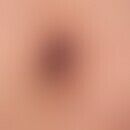Biographical detailsThis section has been translated automatically.
(¤ 1860, † 1930) German dermatologist, active in Dortmund. Born in Jülich/Rhineland; studied human medicine in Berlin and Bonn. 1886 Beginning of dermatology training with Josef Doutrelepont in Bonn, which he completed in 1889. Subsequently settled in Dortmund. 1889 took over a skin department at the Luisenhospital in Dortmund, which later became the municipal clinics. There, with an annual salary of 1000 Reichsmark, he used his new title of departmental physician from 1901 and was appointed senior physician in 1908. After his appointment as medical officer in 1909 and as Professor h. c. in 1919, he headed the dermatology clinic at the Luisen Hospital in Dortmund until October 1, 1927.
As in other skin clinics in Germany, the focus of treatment was initially on venereal diseases, and the new skin clinic with 21 rooms, which was ready for occupancy in 1900, was also built in Dortmund for these patients, among others. In addition to the treatment of venereal diseases, the diagnosis of occupational diseases became another therapeutic focus of the clinic due to the industrial development of the city - with 142,733 inhabitants in 1900 and 541,000 in 1928. Due to the poor social housing conditions, skin tuberculosis was another focus of disease in addition to venereal diseases and occupational dermatoses. Johannes Fabry continuously documented the incidence of infection among prostitutes and the rest of the population in complex statistics.
In 1910, Paul Ehrlich commissioned him to use his data pool to test new salvarsan compounds for the treatment of syphilis, the effects of which he regularly reported on. As part of his extensive patient documentation, Fabry was committed to the medical supervision of prostitutes, the abolition of pimping and the consistent treatment of sexually diseased prostitutes who did not receive reimbursement of their treatment costs from the health insurance companies.
It was also important for him to oppose discrimination against sexually ill people, and he emphasized: "For us doctors, the prostitutes in the hospital are sick, they may do whatever they want outside." In addition to Fabry's work on sexually transmitted diseases, a large number of people suffering from skin tuberculosis were also treated in Dortmund - around 200 patients a year from 1920-1927.
In addition to irradiation with the Finsen lamp and the use of carbonic acid freezing and local therapy with pyrogallus ointment, Fabry also carried out surgical excision procedures with plastic defect closure according to Karl Thiersch (20. 4. 1822-28. 4. 1895, German surgeon). Despite good results from the established use of radium and mesothorium, Fabry described late damage from these therapies as early as 1926 and drew attention to the possible damage caused by X-rays, but also to the possibility of avoiding them.
Based on his large patient collective of coal miners, he published his observations on the verrucous form of skin tuberculosis in 1909. He was able to draw on the help of 314 miners' district doctors, so that he was able to include twenty years of observation of patients in his documentation. This "study" led him to the conclusion that this variant of skin tuberculosis was a genuine occupational or industrial disease.Fabry introduced a wide range of examination methods at the Dortmund clinic and also used the new knowledge of histological examination for medical diagnostics.
In Fabry's time, the first dermatology clinic in Westphalia developed, the likes of which could only be found in the large neighboring city of Elberfeld in the Rhineland. Düsseldorf, Essen, Bochum, Barmen and Cologne were not given skin departments until later.
He was appointed Professor h.c. in 1919. During his time in Dortmund, he conducted scientific studies on angiokeratoma corporis diffusum. In 1898, at the same time as the British clinician William Anderson, the angiokeratoma corporis diffusum named after him was described for the first time.
Fabry was a founding member and later honorary chairman of the Association of Rhenish-Westphalian Dermatologists. His brother Hermann Fabry was the founder of the dermatology clinic at St. Josef Hospital in Bochum in 1912.
LiteratureThis section has been translated automatically.
- Beiteke U (2016) The Clinic for Dermatology... Akt Dermatol 2016; 42: 321-327
Anderson W (1898) A case of angio-keratoma. Brit J Derm 10: 113-117
Fabry J (1898) A contribution to the knowledge of purpura haemorrhagica nodularis (purpura papulosa haemorrhagica Hebrae). Arch Derm Syphil (Berlin) 43: 187-200



